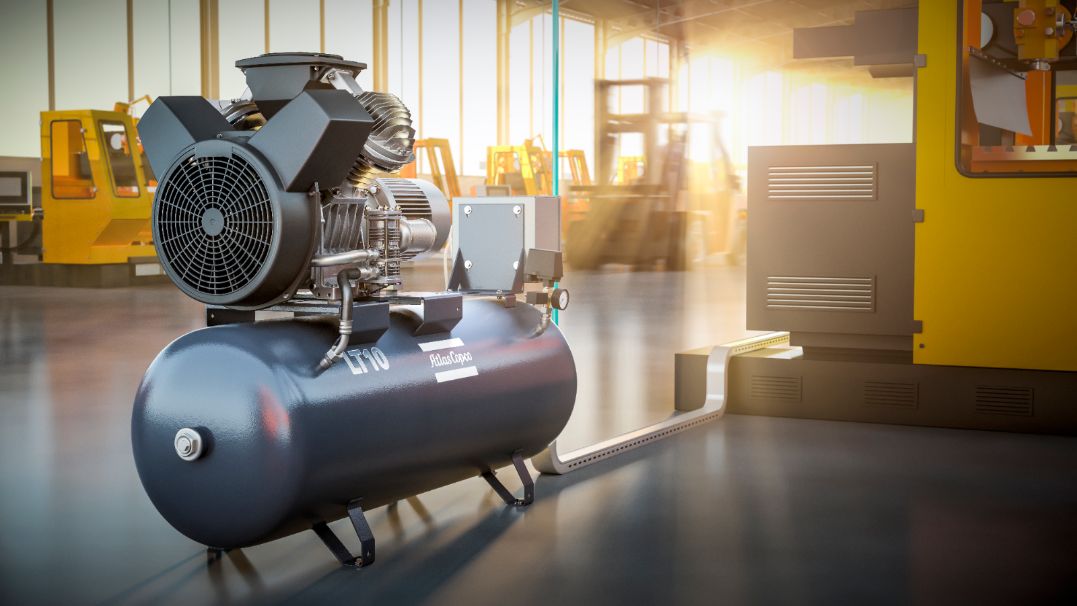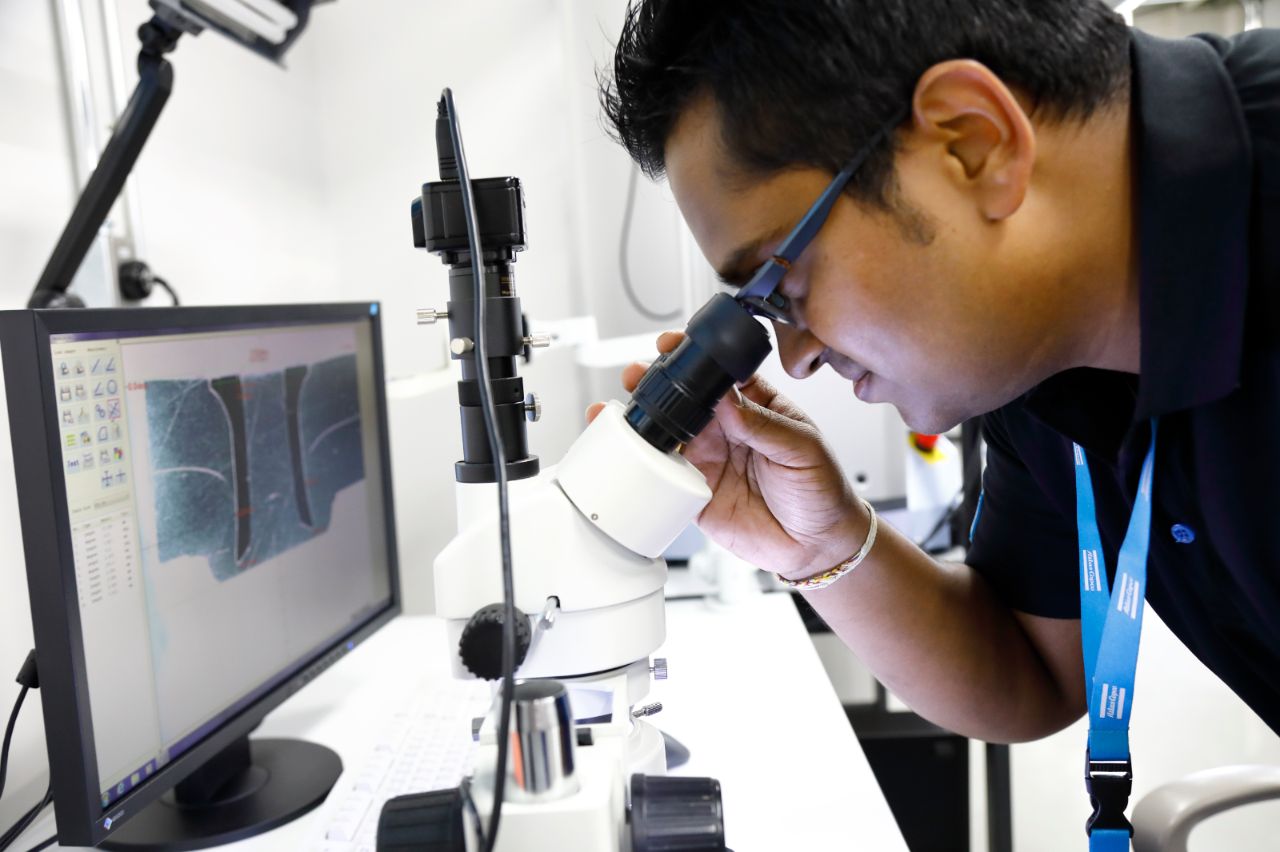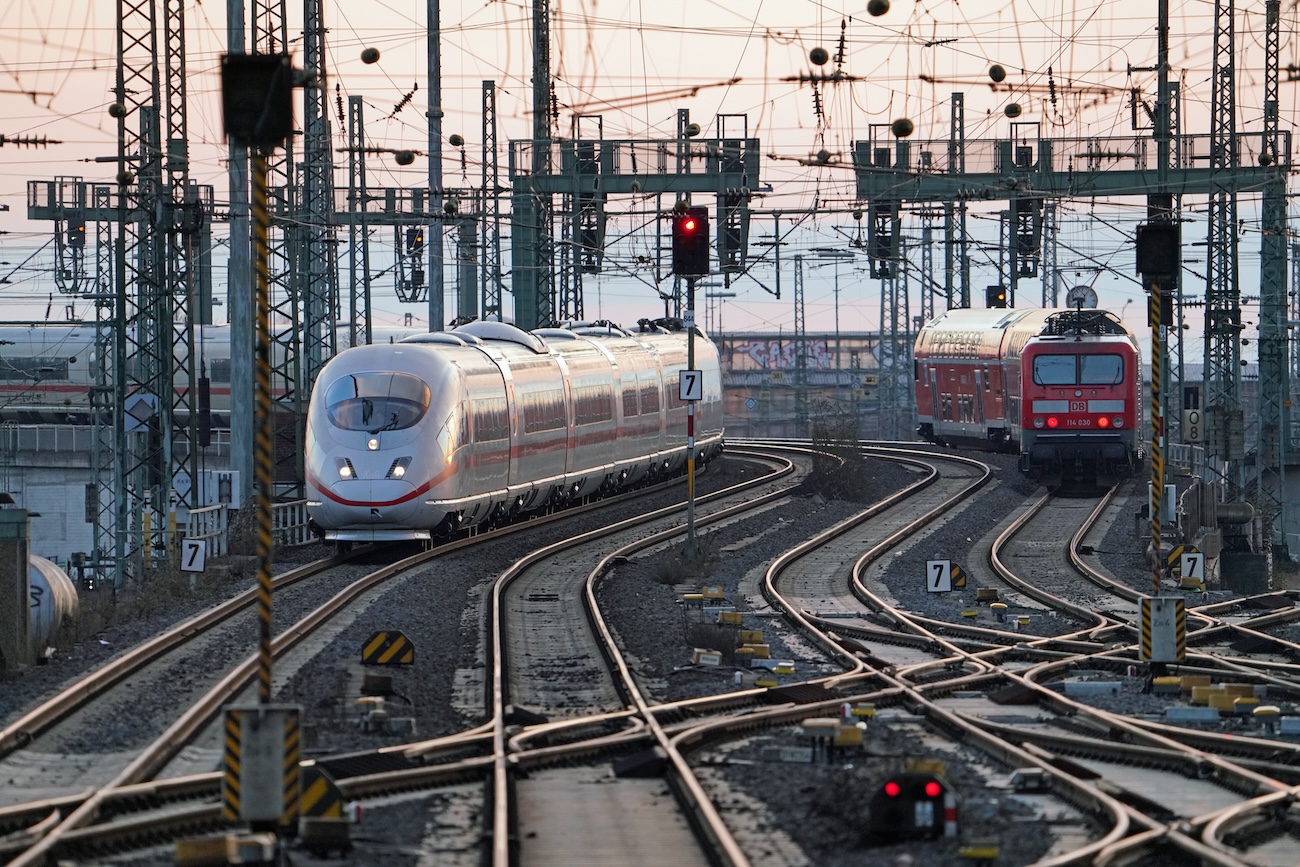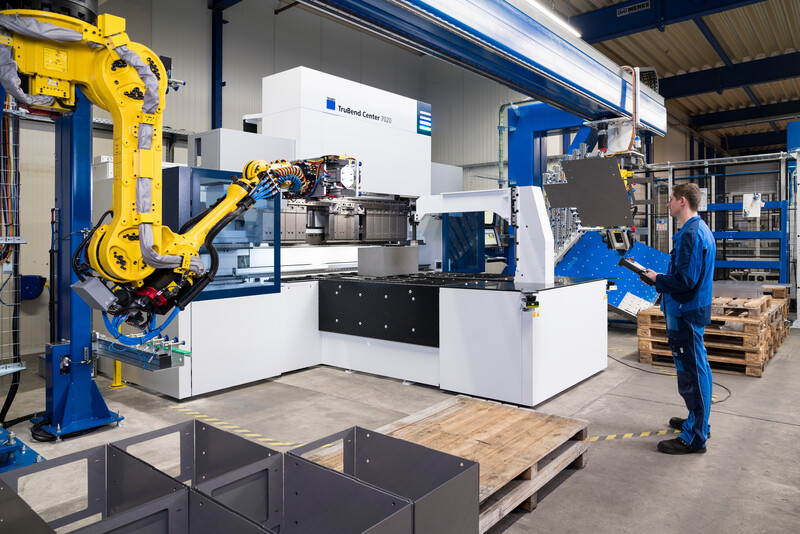
The power of 3D Printing and automated design for jigs & fixtures
AMPOWER Academy 3D Printing and automated design for jigs & fixtures Trinckle, Audi Sport, Deutsche Bahn Tooling, jigs & fixtures 12.06.2024 Share article Customer Cases

Atlas Copco Compressor Technique is part of Atlas Copco Group and is a leading provider of compressed air solutions: industrial compressors, gas and process compressors and expanders, air and gas treatment equipment, and air management systems. Established in 1873 in Stockholm, Sweden, the company today employs more than 43.000 people in 70 countries and serves customers in more than 180 countries.

The heavy machinery and equipment industry is facing several challenges with assembly processes such as a low degree of flexibility and potentially costly human errors. An increasingly digital and connected assembly process will vastly benefit the manufacturers – and reduce their costs. 3D Printing, among other technologies such as Artificial Intelligence (AI) and Augmented Reality (AR). This will ultimately result in overcoming these challenges and lead to reductions in cost, less downtime and increased quality.

A product-portfolio that is characterized by large and heavy equipment makes the identification of successful applications for 3D printing within Atlas Copco Compressor Technique challenging. Most applications that are being realized today are thus either prototyping or tooling applications. That being said, there is a clear direction towards serial applications. This has recently resulted in the first functional component for metal 3D Printing being used in a compressor as end use part.
Overcoming the bias that 3D Printing is not a reliable production technology has also been a major challenge within Atlas Copco Compressor Technique. The company has successfully overcome this bias recently, mainly driven by two achievements. First, the serial production part, the oil nozzle mentioned above, has led to lots of momentum and trust in the technology. The case has been strongly advertised using internal channels and cemented 3D Printing as mature production technology. Second, 3D Printing has recently been used to produce a prototype for a component that could not be delivered otherwise due to supply chain issues. After 3D Printing successfully produced the component, the team was surprised by the quality, cost and lead time the technology could achieve. Using 3D printing as a tool to solve a situation where no other solution was available thus changed the view of the technology for the future.
Lesson 1
Use 3D Printing to solve challenges where no other solution exists.

3D Printing knowledge is spread at Atlas Copco in all directions: bottom-up, top-down but most importantly among peers. Team member that actively work with 3D Printing are not just engineers, but at the same time do marketing and sales for the technology.
In general, 3D Printing knowledge is spread on three levels: The most fundamental level is a constant communication about 3D printing on every occasion. This includes posting regular success stories on the intranet, printing awards for suppliers or handing out 3D printed give aways showcasing the design freedom of the technology. The mid-level consists of a company-wide training platform. Besides focused online learning courses on 3D Printing, this platform hosts a playlist with videos on in-house technologies and applications. On the highest level, every opportunity is used to present 3D Printing to upper management. This strategy keeps a constant awareness of the technology, for example at procurement when there is an upcoming supply chain crisis and 3D Printing might be able to help.
The result of this strategy is a steadily increasing number of applications that are realized from departments across the company, which recently resulted in the 1.000th build job that was printed internally.
Lesson 2
Spread knowledge in all directions: Bottom-up, top-down and among peers.
Since the first person working full-time on 3D Printing was hired in 2015, the team has constantly been growing to now over 50 employees globally. After the first person was responsible for pioneering the technology, further employees have been hired with more specialized 3D printing skills and profiles. The key was to keep the team flexible and adapt it according to the current 3D printing challenges and strategy.
Learning 3
Adapt your team to the current requirements for your 3D Printing strategy.
3D Printing at Atlas Copco Compressor Technique is now on the way to become a well established manufacturing technology. While the site in Antwerp will continue to act as a technology pioneer, there is a focus on increasing the use of the technology in other sites with the vision to establish global 3D-printing hubs. At the same time, Atlas Copco is continuously exploring new and upcoming 3D Printing technologies to realize the potential for their products.
3D Printing at Atlas Copco Compressor Technique is now on the way to become a well established technology. From the early days in polymer printing and prototyping the the technology has proven itself as a tool to solve complex supply chain issues. At Atlas Copco Compressor Technique, 3 key learnings where identified that can help industrial companies to successfully implement the technology:

AMPOWER Academy 3D Printing and automated design for jigs & fixtures Trinckle, Audi Sport, Deutsche Bahn Tooling, jigs & fixtures 12.06.2024 Share article Customer Cases

AMPOWER Academy 3D printing at Deutsche Bahn Deutsche Bahn Railway Berlin, Germany 26.09.2023 Share article Frankfurt (Main) Hbf – Einfahrt ICE 3 / Ausfahrt RE

AMPOWER Academy 3D printing at Eaton Aerospace Fueling progress: How Eaton Aerospace’s dedication to 3D Printing elevated aircraft performance Eaton Aerospace 23. August 2023 Share

AMPOWER Academy 3D Printing in TRUMPF machines Collaborative Efforts, Expertise, and Know-How Lead to Thriving 3D Printing Applications in TRUMPF Machines Trumpf Special Machinery Ditzingen,

AMPOWER Academy Leveraging 3D Printing at BOBST Innovative Approach, Internal Collaboration, and Supplier Selection Propel the World’s Leading Packaging Machine Manufacturer Towards 3D Printing Success.
Would you like to further advance your 3D Printing success story? We learned that training a broad number of employees is key to increase the usage of 3D Printing in a company and to successfully launch new applications. You can try out the AM Fundamentals course of the AMPOWER Academy free of charge.

Understand the most important topics to get started with Additive Manufacturing
The sinter-based AM (SBAM) technologies have, as the name suggests, the sintering process in common. In this process, the printed green part is consolidated into a dense part and receives its final properties. The green part can be printed in advance using different technologies.They all have in common that metal powder is bound to the desired shape by a binder. The best-known printing technologies include Binder Jetting and Filament Material Extrusion.
In this section, you learn everything about the sinter-based AM process chain and get an overview of the different printing technologies.

This course is aimed at engineers, designers and other professionals that are working closely with sinter-based AM technologies. The goal is to cover the most important aspects that will enable engineers and designers to fully grasp the capabilities and technical limitations of the printing technologies and the sintering process to succeed in technology selection and part design. Besides going through the course from the beginning until the end, this course can also act as a constant source of knowledge while working on AM projects.
The course is structured into the following sections.
This section will start with an overview of the sinter-based AM process chain and its printing technologies, followed by a technology deep dive into the most important aspects of the BJT technology, followed by a closer look at the debinding and sintering step also including sintering simulation .
The second section will provide an overview of the different materials that are available as well as part characteristics that can be achieved with the BJT process and typical methods for quality assurance. Finally, several common defects in the BJT process are presented.
The last section will act as a guideline for designers. Besides generally describing the process when designing for Additive Manufacturing, actionable restrictions and guidelines for the BJT process are provided. The final section will present several design examples from different industries.
Simulation to compensate the deformation during the sintering step, nesting of parts and definition of printing parameters
Through various printing processes, different feedstocks such as metal powders, filaments, pellets or dispersions are processed into green parts
Unpacking of fragile green parts needs to be done carefully and is typically a manual process.
Debinding describes the process of removing the binder which results in a brown part
To reach the structural integrity of a metal part, a sinter process is required. The powder particles fuse together to a coherent, solid structure via a mass transport that occurs at the atomic scale driven via diffusional forces.
The brown part shrinks ~13-21 % in each direction.
The process chain of sinter-based technologies differs from other AM Technologies. Especially the post-printing processes (debinding and sintering) are crucial to achieve the intended mechanical properties.
Binder Jetting is a powder based Additive Manufacturing technology in which a liquid polymer binder is selectively deposited onto the powder bed binding the metal particles and forming a green body.
The metal powder is applied to a build platform in a typical layer thickness of 40 µm to 100 µm. Subsequently a modified 2D print head apply a binder selectively onto the powder bed. Depending on machine technology a hardening or curing process of the binder is performed in parallel for each layer and/or at the end of the whole build. During the in-situ curing process a heat source is used to solidify the binder and form a solid polymer – metal powder composite.
Afterwards the build platform moves downward by the amount of one layer thickness and a new layer of powder is applied. Again, the liquid binder is deposited and hardened in the required regions of the next layer to form the green body. This process is repeated until the complete part is printed. After the complete printing process is finished the parts have to be removed from the “powder cake” meaning the surrounding loose but densified powder. To improve the removal of the excess powder from the green body often brushes or a blasting gun with air pressure are used.
To create a dense metal part the 3D printed green body has to be post-processed in a debinding and sintering process. Similar to the metal injection molding process BJT parts are placed in a high temperature furnace, where the binder is burnt out and the remaining metal particles are sintered together. The sintering results in densification of the 3D printed green body to a metal part with high densities of 97 % to 99,5%, dependent of the material.
In classic Binder Jetting systems such as the ones distributed by EXONE or DIGITAL METAL the liquid binding agent is selectively deposited with a single print head. Meaning the width of the print head does not cover the full width of the powder bed. Therefore, the print head moves multiple times in xy-direction over the powder bed to completely cover the printing area and distributing the polymer binder.
The SINGLE PASS JETTING technology was developed by DESKTOP METAL and HEWLETT PACKARD. The width of the printing head covers the full width of the powder bed. When the printhead passes over the powder bed, binder is released from more than 30,000 small nozzles and the whole powder layer is selectively immersed in binder in one pass. The process is bi-directional which means that the binder deposition takes place in both moving directions of the printhead. With these modifications the printing speed is significantly increased.
A similarly fast technology is the METAL JET process by HEWLETT PACKARD. In a single pass, a liquid printing agent is applied to the powder layer and subsequently partially evaporated to form the binding polymer around the metal powder. After the completion of the print an additional curing to achieve the full green body stability is needed.
3DEO combines the Binder Jetting process with a subsequent machining process. Different from conventional Binder Jetting processes, the binder is not only deposited selectively but onto the entire powder layer. After hardening of the complete layer, the part geometry is shaped through a milling process every couple of layers by cutting the part contour out of the binder powder composite.
Binder Jetting is a powder based Additive Manufacturing technology in which a liquid polymer binder is selectively deposited onto the powder bed binding the metal particles and forming a green body.
The metal powder is applied to a build platform in a typical layer thickness of 40 µm to 100 µm. Subsequently a modified 2D print head apply a binder selectively onto the powder bed. Depending on machine technology a hardening or curing process of the binder is performed in parallel for each layer and/or at the end of the whole build. During the in-situ curing process a heat source is used to solidify the binder and form a solid polymer – metal powder composite.
Binder Jetting is a powder based Additive Manufacturing technology in which a liquid polymer binder is selectively deposited onto the powder bed binding the metal particles and forming a green body.
The metal powder is applied to a build platform in a typical layer thickness of 40 µm to 100 µm. Subsequently a modified 2D print head apply a binder selectively onto the powder bed. Depending on machine technology a hardening or curing process of the binder is performed in parallel for each layer and/or at the end of the whole build. During the in-situ curing process a heat source is used to solidify the binder and form a solid polymer – metal powder composite.
Binder Jetting is a powder based Additive Manufacturing technology in which a liquid polymer binder is selectively deposited onto the powder bed binding the metal particles and forming a green body.
The metal powder is applied to a build platform in a typical layer thickness of 40 µm to 100 µm. Subsequently a modified 2D print head apply a binder selectively onto the powder bed. Depending on machine technology a hardening or curing process of the binder is performed in parallel for each layer and/or at the end of the whole build. During the in-situ curing process a heat source is used to solidify the binder and form a solid polymer – metal powder composite.
Binder Jetting is a powder based Additive Manufacturing technology in which a liquid polymer binder is selectively deposited onto the powder bed binding the metal particles and forming a green body.
The metal powder is applied to a build platform in a typical layer thickness of 40 µm to 100 µm. Subsequently a modified 2D print head apply a binder selectively onto the powder bed. Depending on machine technology a hardening or curing process of the binder is performed in parallel for each layer and/or at the end of the whole build. During the in-situ curing process a heat source is used to solidify the binder and form a solid polymer – metal powder composite.